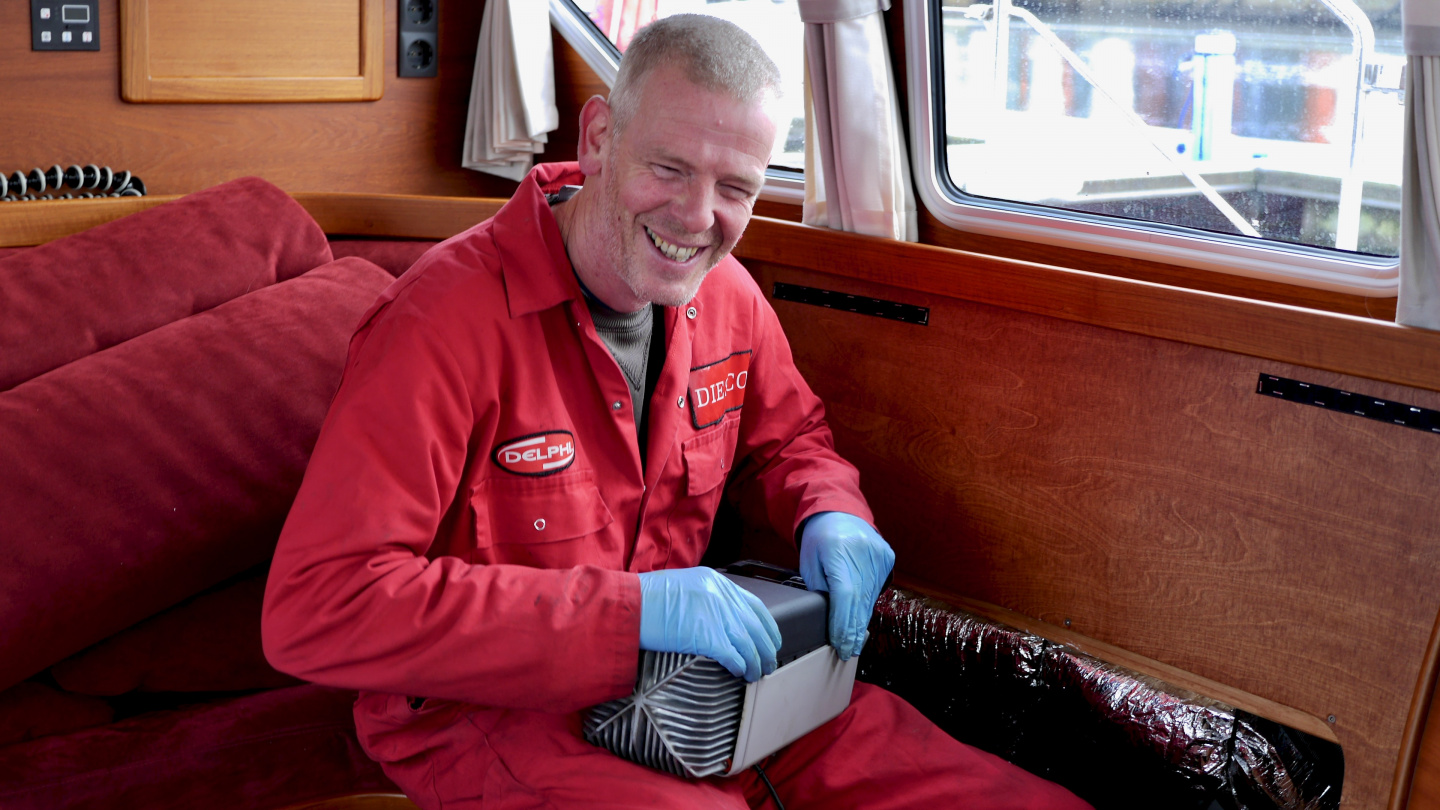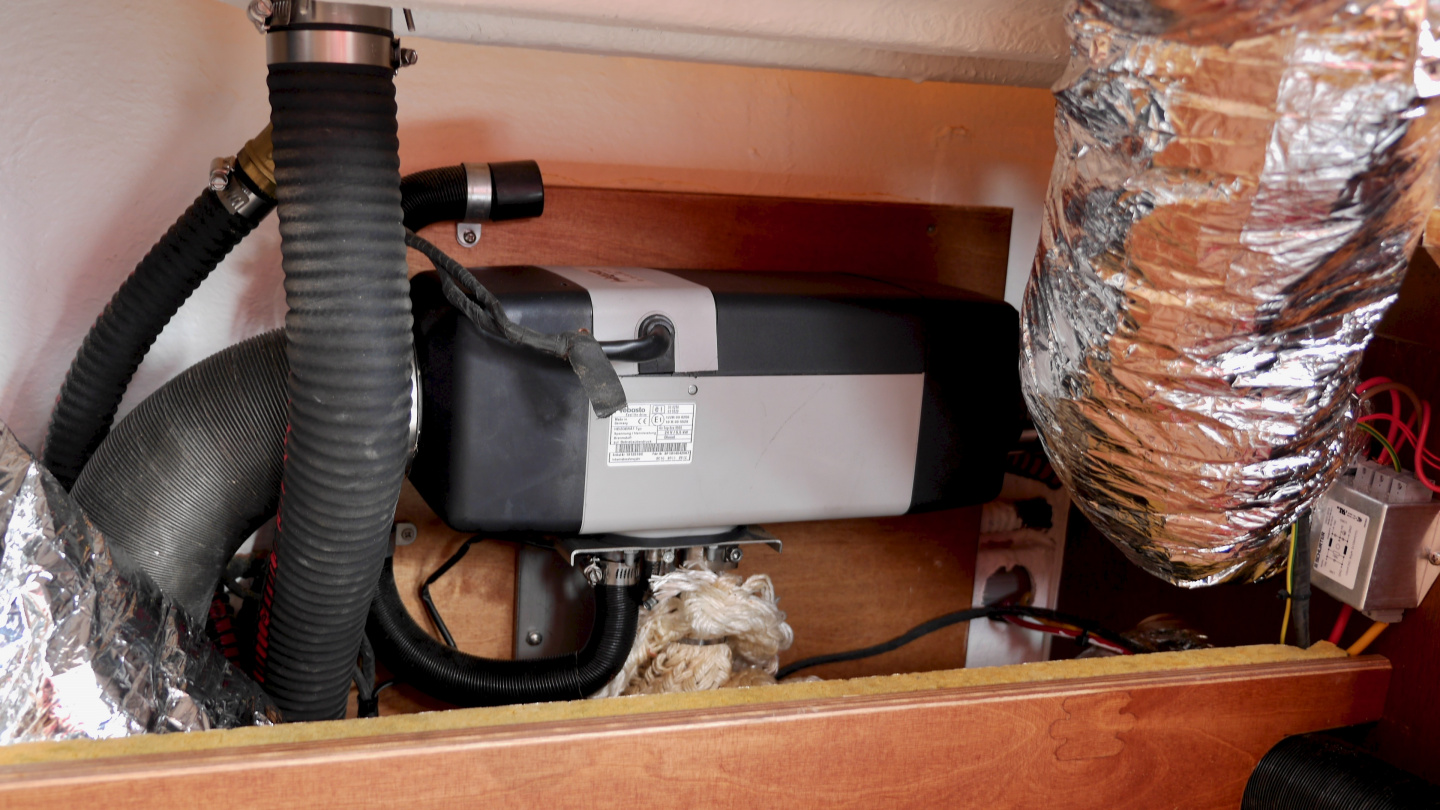Managing the heat on a boat can be quite a challange. In the tropics or during the summer in the Mediterranean the heat must be somehow disposed from the boat. However here in Northern Europe the task is to make the boat warm, dry and cozy.
Thus it was a rather huge shock when we arrived onboard Suwena in November and the heater made a noise of the broken helicopter and then it only blinked the error code. Outside temperature was +8 degrees. Fortunately we could run the air conditioner in reverse cycle and produce the heat. The shorepower was connected and finally the boat started to warm up.
Warming the boat with the air conditioner was not without its own problems. The air ducts are located high and the warm air tends to stay up near the ceiling while at the same time the floor level stays ice cold. Anyhow the conditions were managable and we started to think about fixing the heater.
Suwena is equipped with a Webasto Air Top 5500 forced air diesel heater. The heater had been working flawlessly for three years. Now the error code showed that the motor might be broken. Ipswich has a very good variety of boat service companies and in no time we managed to get a technician aboard to look at the Webasto.

His first questions were about how many hours we had on a heater and do we use a white or red diesel on it? As the red diesel is a big no-no on the continent we had white and he was satisfied. He only commented that there is really no quality standard for red fuel and sometimes bad quality fuel can easily clog the burner.
Answering the other question was not so straightforward. We calculated approx how many days we have been aboard during the spring and fall seasons. Then we added the days the heater was functioning on our trip of the Göta canal during the extremely cold June 2012. After pondering we came out with the number of about 2500 hours. He said that the motor has toasted and getting these hours out from the heater was very good result. On his experience the problems with the heater motors start after about 1500 hours regardless of the brand. The brushes inside the motor are very small and they wear out easily. There are no serviceble parts inside the motor, the only option is to replace it completely.
It is to be debated if 1500 hours is a lot or not. For a casual boater who makes weekend trips mostly during the summer and the heater is only used on a few times during the spring and fall, the motor would easily last 10 years. For fulltime liveboard this could at worst mean less than a year. On the otherhand the brushes last longer in the continuous use of the heater. For one thing I really do not understand why they do not make brushless versions. The technology is well developed, it uses less power and lasts forever or at least until the bearings are worn to pieces. I really think the only reason not to produce the long-lasting motors, is the spare part business of the manufacturers. New burners and motors are bringing the significant part of the revenue of the manufacturers.
No wonder many liveaboards prefer drip fed diesel heater stoves. Electricity is not needed and service is minimal. These heaters, like the ones from Refleks last forever. Unfortunately they are not suitable for us as our living compartments and pilothouse are not on the same level. The heat would not distribute around the boat evenly.
Anyhow, the burner needed replacement as well, so both parts were ordered for delivery next day. The mechanic was kind enough to visit us on Saturday and put the Webasto back on. Alas, no luck as the error condition remained. After a call to Webasto support they determined that the problem must be with the control unit electronics which got toasted together with the motor. Thus we had to order the control unit as well.

Finally on our last day aboard the rebuilt Webasto arrived and everything worked beautifully. Why wouldn’t it? After all we had replaced all parts except the aluminium casing. An expensive repair indeed!

